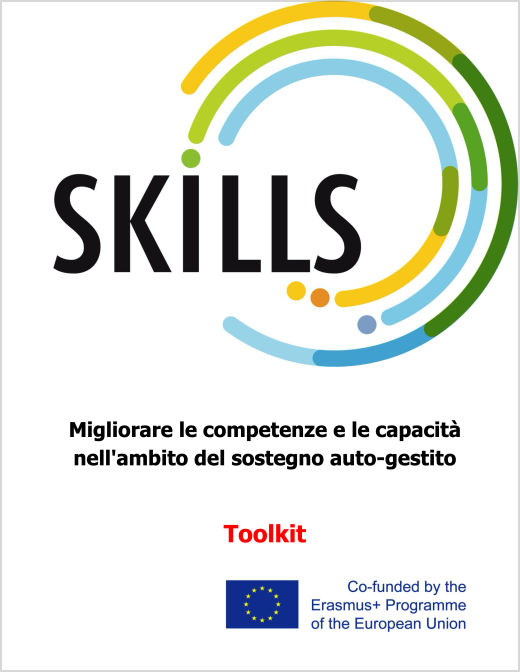Self-Directed Support Resources in Italian
The Italian partner in the SDS Network (SKILLS) is Anffas. SDS in Italy is possible, but it is not common. In order to get funding to use for Self-Directed Support people need to establish an Individual Project. The materials shared here were created by Anffas or were adapted from other partners in the SDS Network.
You can find out more about self-directed support in Italy on the Anffas website here.
You can watch the full series of films on self-directed support in multiple languages on YouTube here.
Anffas produced an accessible training course for people and families which explained the idea of self-directed support and also explained how self-directed support can be possible in Italy. This slideshow explains the key concepts of self-directed support and how they apply in Italy.
In addition Anffas created a workbook that people and families can use to understand the core concepts of self-directed support.
Read the workbook (pdf) here.

Anffas also produced:
As part of the SKILLS project In Control Scotland produced this multi-media workbook on self-directed support. The workbook explains the key concepts of self-directed support and the difference it should make to people who are supporting people with disabilities. Anffas translated the workbook into Italian.
Read and download the free pdf here.

As part of the SKILLS project Suunta (KVPS) produced a training course for professionals. This course helps people understand the difference self-directed support makes to the planning and organisation of support, and the need to shift power and control to people with disabilities and families.
The Training Manual for the course is free to read and download here.
To help people understand what self-directed support means in practice there are real stories from Finland showing how people can make to their support and their lives:
Suunta also produced a template which can help people plan their own support and think about the changes they want to make to their own life.
Download the Support Plan template (pdf) in your browser here.

These case studies were also developed in order to help people think about what kind of plans might be useful.
Adele - case study and training exercise
Julius - case study and training exercise
Maria - case study and training exercise
As part of the first phase of the SKILLS project the SDS Network, led by EASPD, gathered information about how self-directed support is developing across Europe. An Italian translation of the report is available to download here.

The SDS Network is now beginning to gather more information about the development of SDS globally. You can see the emerging mapping information here.
Often pictures are more powerful than words and infographics are a powerful way of sharing information about an idea. These graphics were produced by Simon Duffy and translated into Italian by Anffas.
Self-directed support infographics in Italian are on the Centre for Welfare Reform's website here.
The project also produced a number of other resources which were not translated into Italian.
Simon Duffy wrote a discussion paper offers an overview of what self-directed support is based on its 50 years of development. It explains why self-directed support helps to advance the citizenship of people with intellectual disabilities. It also explores some of the obstacles or difficulties that societies face when they try to implement self-directed support.
You can read Self-Directed Support: if it's so good then why is it so hard? here.
In addition Simon Duffy wrote a guide for anyone who is trying to lobby for self-directed support in their own country. His top tips for change are:
You can read the full article on the Centre for Welfare Reform's website here.
All of this material is free to use.
If you want to adapt and change this material then you can do so; but please share any new translations or adaptions with the SDS Network so that it can benefit others.
If you want to join the SDS Network please contact Simon Duffy.
If you are working on self-directed support in Italy please contact Anffas so that they can support you and learn with you.
Self-Directed Support, social care, Italy, Inspiration